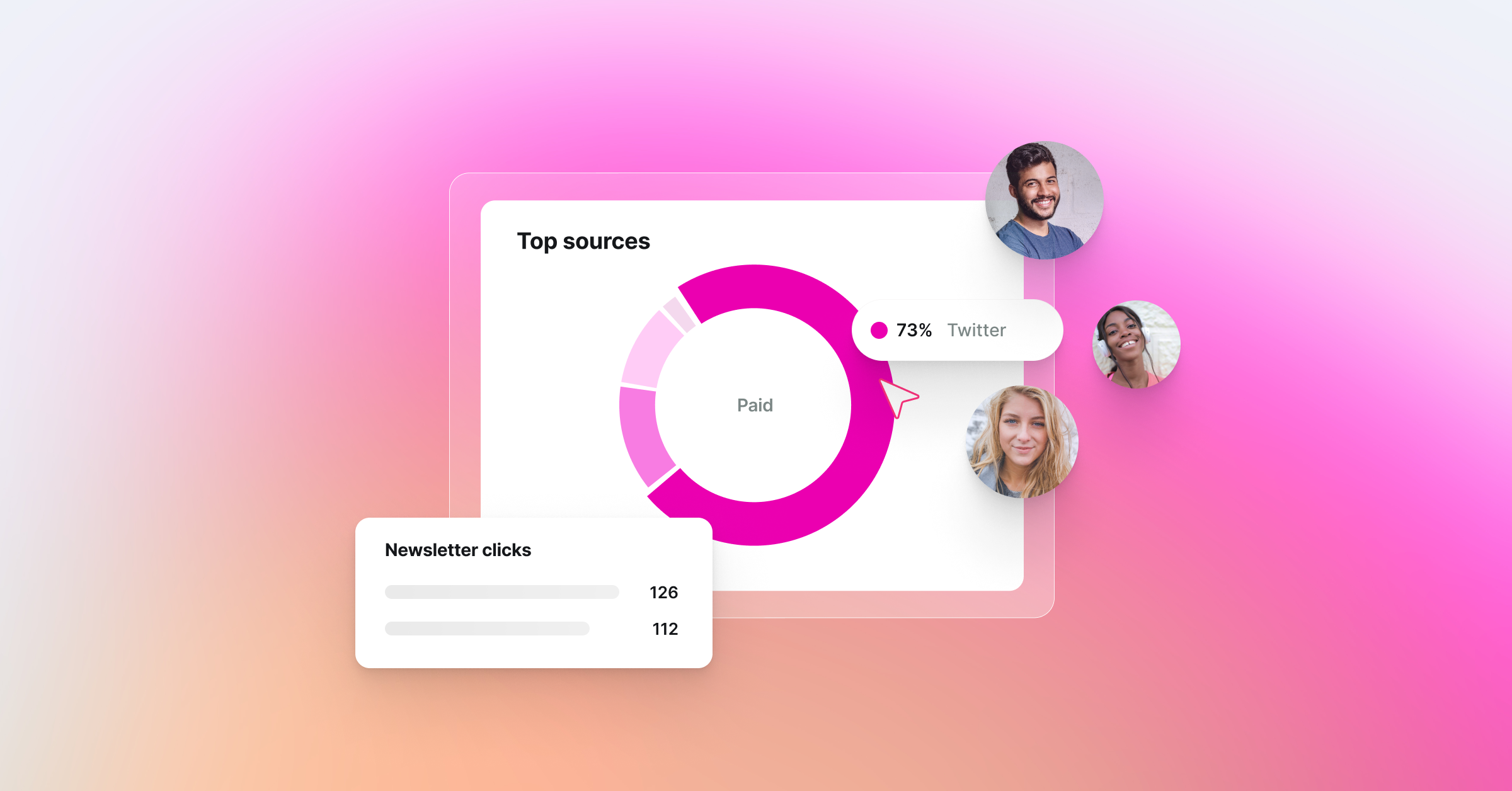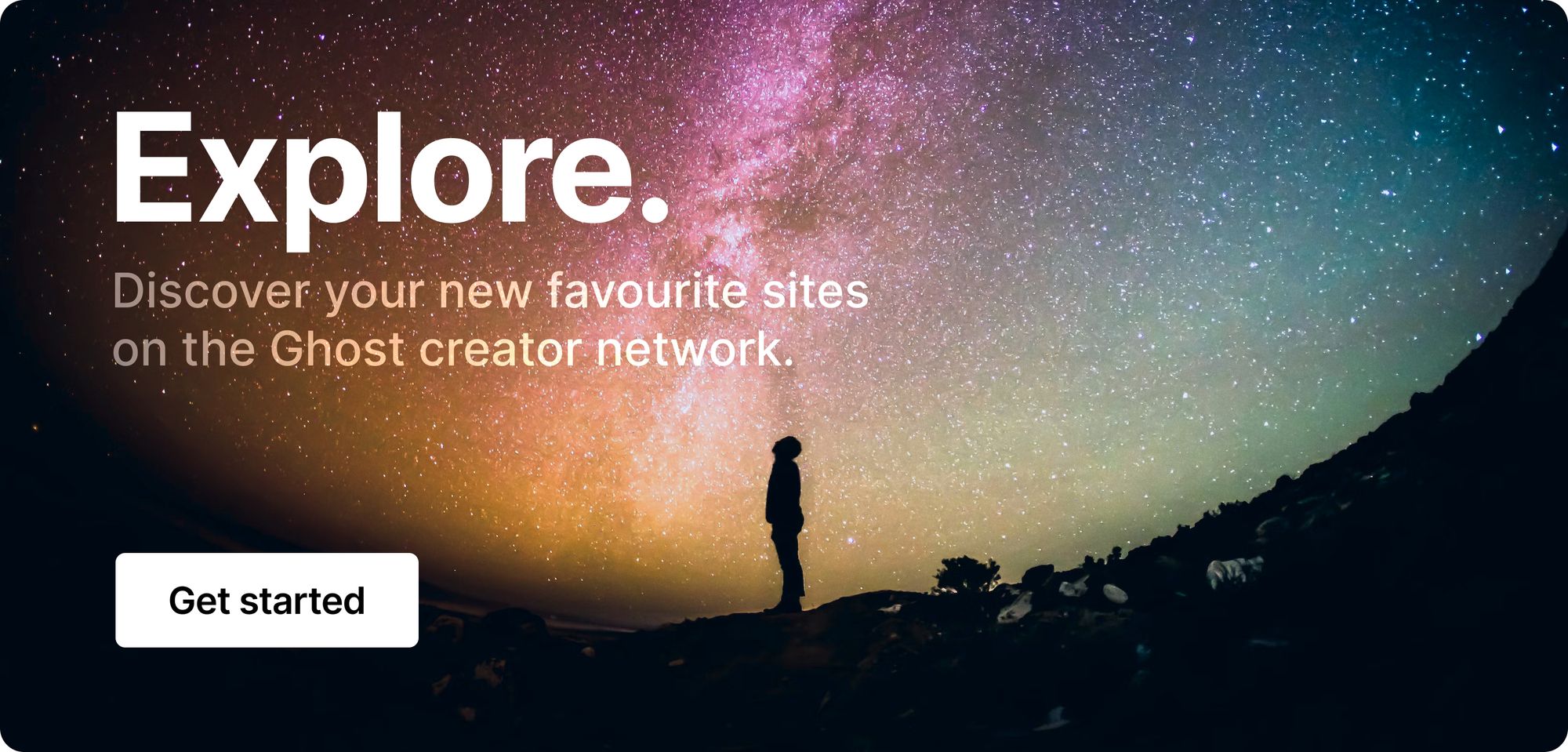🎈 The most common reason your audience isn't growing
An audience isn't an amorphous group that sprouts out of thin air once you begin building something online. They're individuals who, one by one, find your work, connect with your story, and develop trust in your message.
So, if growth is your goal, focus on individuals (not numbers). Because every audience, no matter how big, is just a group of people sharing a story, experience, or goal. And if you can show that you understand their unique situation, you'll win.
💬 In this week's issue:
- Growth. How to use what you know about your audience to grow it faster.
- Subscribed. Why subscribing might not mean what you think it does.
- Balance. See how some creators take the easy route to prolific publishing.
✨ New member analytics in Ghost

Most creators are juggling a dozen different tasks at any single moment. Between planning, creating, promoting, and networking — there's rarely a spare moment to take a step back and ask the question, "Is what I'm doing actually working?"
Now, Ghost can help you answer that question quickly and easily with the new member growth sources.

Here are a few of the data points you'll now be able to discover for every single member of your audience:
- Where they came from. In the dashboard, you can see where your readers (free and paid) are coming from. Did they find your site directly? Come over from a social media channel? Or were they referred from another newsletter? This information will help you focus on the channels with the highest returns.
- What they read. Not all posts are created equal. Some will significantly move the needle for your business, and now you can see exactly which ones those are. The new post analytics will tell you which articles or newsletters led to the most conversions so that you can focus on writing what your audience most desires.
- Individualized history. Finally, the individual member profiles will now display additional information including the date they joined, their source, and the page they were converted on.
For a full overview of these new features, check out our changelog post.
🗞 Latest tips & stories
- To accomplish more, try doing less
- What's trending on Google this month?
- A beginner's guide to building a keyword strategy
- 14 mental models that could supercharge your work
- Why you should survey your audience more often
📺 Why the word "subscriber" is misleading

During the 10 years Matt Koval worked at YouTube, the most frequently asked question they heard was, "Why is there such a big difference between subscriber counts and view counts?"
Now, although only a few of you use YouTube as a growth channel, the discussion around what a subscriber means is extremely useful - and might lead you to think differently about the audience you're growing.
- People subscribe for different reasons. Whether it's a YouTube channel, blog, or newsletter, there is a range of goals consumers have when subscribing. Some are superfans; others are just mildly interested. A few want to learn how you do what you do. A handful may have subscribed because of a recommendation and have never actually read or seen your content before. In short, not all subscribers are created equal.
- Why 100% open rate doesn't exist. Based upon the information above, it's a little easier to see why not every subscriber opens every single email you send - and why that's okay. Their level of interest and engagement will change over time. This doesn't mean you need to change your content. But the better you understand the journey your customers are on, the better you can meet them where they're at.
- Algorithms can throw things for a loop. When you rely on social media subscribers for your business, you are committing to an uphill battle. Algorithms want to keep users on their respective platforms, whether that means recommending your content or not. "Owning your audience" (e.g., building an email list) is the only way to cut out the middleman.
- A subscription isn't a marriage. Getting a person to subscribe to your content is not the end of the journey, only the beginning (more like a first date than a marriage ceremony). Many creators overestimate what subscribing means because they disregard the fact that keeping a subscriber is often more difficult than getting one.
These ideas can sound intimidating, but the heart of the message is this: don't take your audience for granted. Every subscriber is a real human being on their own journey who decided to trust you with a portion of their time and attention.
Honor that and you'll build the business of your dreams.

💪 High-effort versus low-effort content

Ever since high-profile writers began leaving their industry positions to grow their own independent newsletters people have been asking what kind of content could these solo creators produce. Would they be able to provide the same type of hard-hitting journalism even with fewer resources? Or do they need to focus on opinion-driven content that's "easier" to publish quickly?
Simon Owens tackled this question by showing how creators, both inside and outside of the newsletter realm, handle this challenge. The answer is simple: produce a mix of content.
The key to success as a prolific solo creator is to find a balance between high-effort and low-effort content.
- High-effort content requires lots of research, time, and resources. But it also usually becomes a go-to piece within your niche or for your audience. The ROI is very good, but there are hard limits to how often these can be produced. (Examples: A 5,000-word analysis or a high-budget YouTube stunt.)
- Low-effort content requires far few resources and can be published quickly. The downside is that it's hard to build a brand around these. Instead, these should be thought of as "maintenance" items that keep people engaged while they wait for the bigger drops. (Examples: Social media posts made from clips of large works, reaction pieces that need minimal research or editing.)
If you're finding yourself hitting a wall in terms of how much content you're putting out into the world, take a step back to measure the effort required for everything you're doing and intentionally rebalance the scales — periodic high-effort to make a splash; frequent low-effort to keep people paying attention.
👀 Curators pick

❤️ Enjoy this newsletter?
Forward to a friend and let them know where they can subscribe (hint: it's here).
Anything else? Hit reply to send us feedback or say hello.
Join an invite-only community! Connect with like-minded people who create content professionally — apply here.







